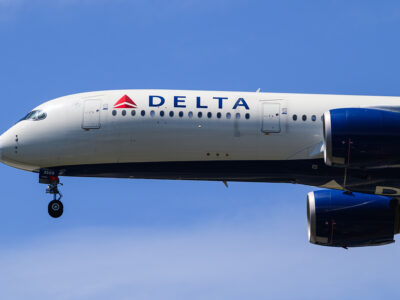Middle Eastern airline capacity has slowly inched up to -48.8 percent of capacity this month compared to the same period in 2019, from a low of -70 percent last year.
Current global airline capacity sits at 38 percent below June 2019 levels, said the latest report from UK-based airline analysis firm OAG.
According to Matt Colling, EVP Content, OAG, global recovery will be patchy until consistent protocols and vaccines are rolled out across all markets and “not just wealthy countries”.
Mixed bag capacity outlook
“Some countries are storming ahead while others are struggling. The US, for example, has shown impressive performance in the last three months, climbing to -24.3 percent capacity in June compared to the same month in 2019 – this is largely driven by domestic demand,” Colling said in a webinar, adding that the Middle East is contending with a “difficult market, where lots of traffic is connecting international [countries] and they are using lots of wide-bodied aircraft”.
Colling commented that the UAE remaining on the UK’s travel red list represents a major barrier to air traffic – for what was historically one of the region’s largest source markets.
Regional airlines driving recovery
John Grant, partner at Midas Aviation, said the Middle East market is in a “pretty similar situation” to other regional markets.
“Regional airlines reliant on connecting traffic are struggling whilst the more local airlines serving local markets with smaller aircraft type – particularly the low-cost carriers – are beginning to see a recovery,” Grant told Arabian Business.
 John Grant, partner at Midas Aviation
John Grant, partner at Midas Aviation
“All of the attention is normally around the Big Three – Emirates, Etihad and British Airways – and they will continue to struggle given country lockdowns and quarantines on arrival; the complexity of travel; vulnerability of sudden lockdowns; and consumer confidence being shattered as they struggle with the complexity,” he added.
Grant said carriers such as Flydubai, which have a more regional focus, are beginning to see a recovery in demand. “These types of carriers have aircraft sometimes half the size of big A380 aircraft and are better sized for the immediate market recovery.”
At the current rates of recovery, it is unlikely that UK–UAE air carriers will reach pre-Covid capacity levels until summer 2022 at the earliest, the Midas Aviation expert predicted.
OAG predicts a global capacity high of 75-80 million global seats per month by August, should “significant positive news” surface surrounding the lifting of travel restrictions.
 Grant said carriers such as Flydubai, which have a more regional focus, are beginning to see a recovery in demand
Grant said carriers such as Flydubai, which have a more regional focus, are beginning to see a recovery in demand
The ongoing struggles of Middle East airlines to cope with the impact of the global coronavirus pandemic was laid bare earlier this month as figures showed demand was more than 82 percent down on normal levels during April.
The International Air Transport Association (IATA) said the region’s airlines posted an 82.9 percent demand slump in April compared to April 2019, which was weaker than the 81.6 percent decline in March.
Globally, IATA announced that domestic travel demand improved in April compared to the prior month, although it remained well below pre-pandemic levels, while recovery in international passenger travel continued to be stalled in the face of travel restrictions.








